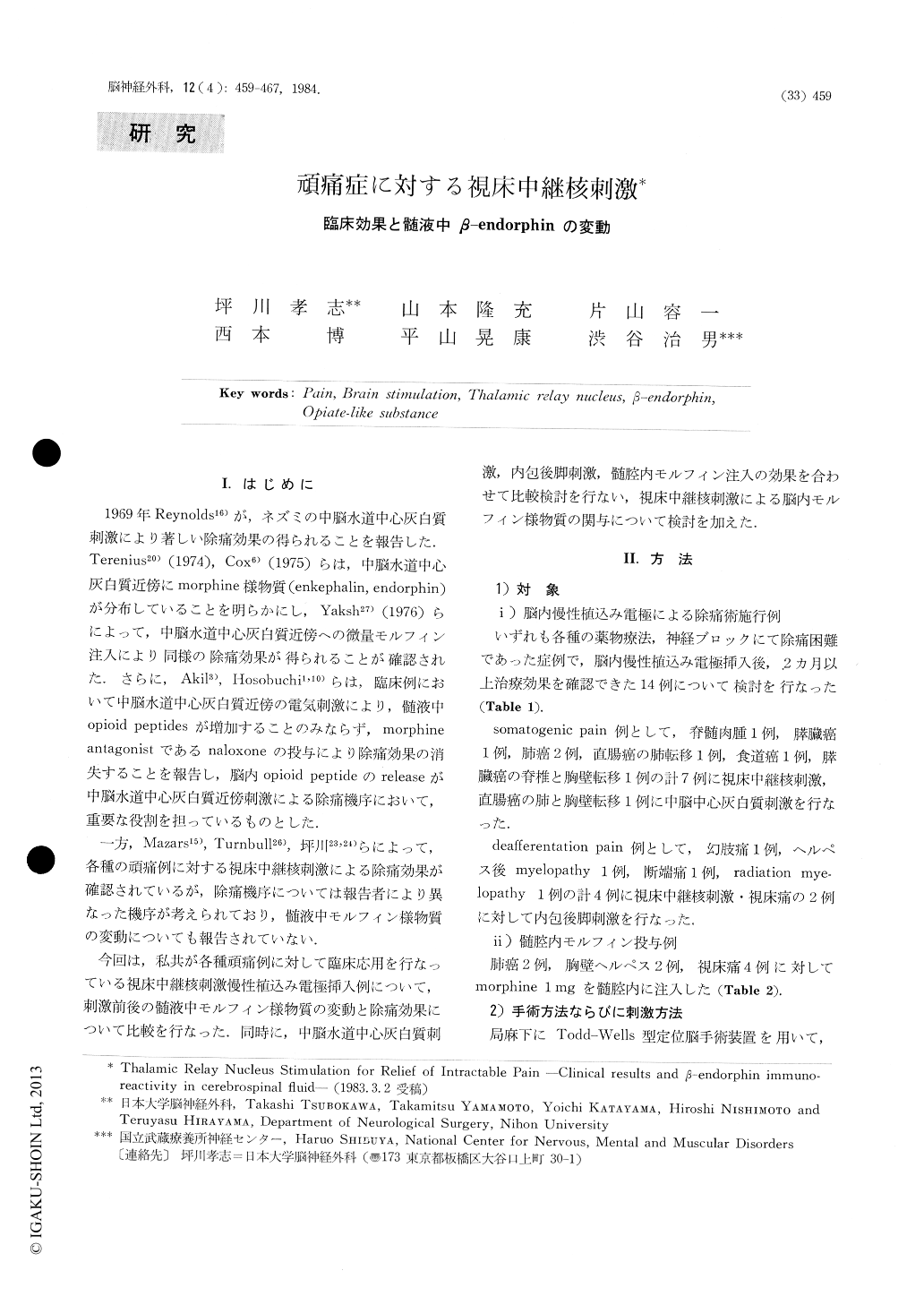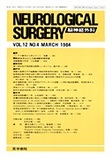Japanese
English
- 有料閲覧
- Abstract 文献概要
- 1ページ目 Look Inside
I.はじめに
1969年Reynolds16)が,ネズミの中脳水道中心灰白質刺激により著しい除痛効果の得られることを報告した.Terenius20)(1974),Cox6)(1975)らは,中脳水道中心灰白質近傍にmorphine様物質(enkephalin,endorphin)が分布していることを明らかにし,Yaksh27)(1976)らによって,中脳水道中心灰白質近傍への微量モルフィン注入により同様の除痛効果が得られることが確認された.さらに,Akil3),Hosobuchi1,10)らは,臨床例において中脳水道中心灰白質近傍の電気刺激により,髄液中opioid peptidesが増加することのみならず,morphineantagonistであるnaloxoneの投与により除痛効果の消失することを報告し,脳内opioid peptideのreleaseが中脳水道中心灰白質近傍刺激による除痛機序において,重要な役割を担っているものとした.
一方,Mazars15),Turnbull25),坪川23,24)らによって,各種の頑痛例に対する視床中継核刺激による除痛効果が確認されているが,除痛機序については報告者により異なった機序が考えられており,髄液中モルフィン様物質の変動についても報告されていない.
Chronic implantation of a stimulating electrode inthe thalamic relay nucleus (11 cases), in the periaque-ductal gray (1 case) and in the internal capsule (2 cases)was performed in fourteen cases which suffered fromintractable pain. All these cases could get pain reliefat least initial two months.
Ventricular fluids were collected before and afterstimulation with optimal combination of parameters,and measurements of 13-endorphin were performed byradio-immunoassay.
Intrathecal morphine (1mg) injection was performedin eight cases. Cerebrospinal fluids were collected bylumbar tap before and 24 hours after morphine injection.

Copyright © 1984, Igaku-Shoin Ltd. All rights reserved.


